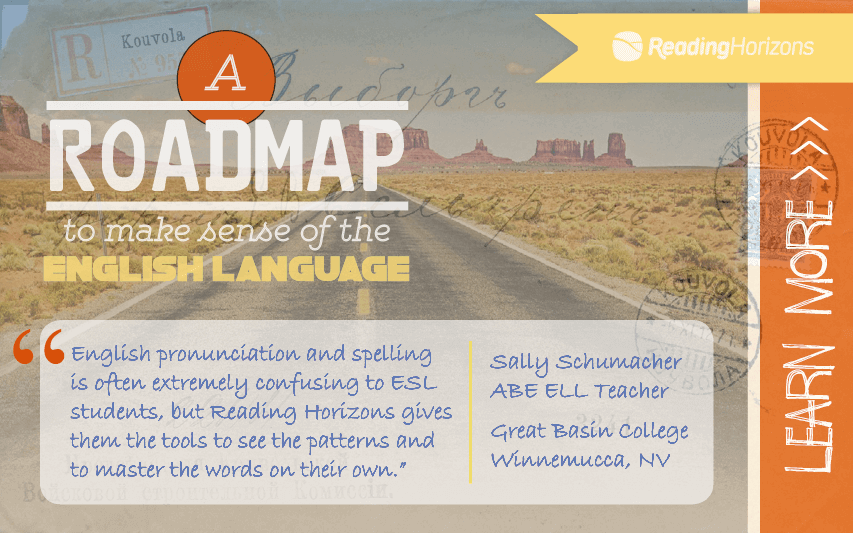Guest Post by Dr. Eugenia Krimmel

As is made clear when working with a struggling reader or English Language Learner—reading is a complex language skill. Each aspect of reading has its skillset, and only when all of these skill sets are linked together are students able to achieve the ultimate goal of reading: to read to learn. But too often, one of these essential skill sets goes missing from reading instruction.
Often educators teach reading strategies to English Language Learners (ELLs) in a process parallel to the method used for native English speakers (Robertson, 2009). The basis for this parallel is simple: ELLs and native English-speaking children can learn from the same approach because they are all learning to read English for the first time. However, ELLs’ literacy assessments across the country show that as a group, they are lagging behind their native English-speaking peers despite being taught with the same approach (U.S. Department of Education, 2011).
In order to know how to decrease the disparity between ELLs’ and native speakers’ literacy skills, it is important to understand what effective reading instruction includes. In 1997, Congress funded the National Reading Panel (NRP) to identify the elements of successful elementary reading programs. As a result, reading specialists and educators alike have become familiar with the elements which formed the basis of the Reading First Program under No Child Left Behind of 2001. These five elements are:
Despite this research, I have discovered the following trends through my teaching experience over the years: ESL teachers have a cursory understanding and even less training of teaching reading as a skill on any grade or age level. Elementary teachers are more equipped to teach reading, with reading instruction part of their undergraduate curriculum. Secondary teachers are less likely to have such literacy training, but the ESL certifications and endorsements throughout the country serve kindergarten through grade 12 students and adults.
Due to this training gap, ESL teachers rely on reading specialists to fill in what they do not know or do not know well. Reading specialists come from the perspective of teaching children whose native language is English. ESL teachers then develop programs, instructional goals, and materials based on the native English speaker models.
I propose we approach ESL reading instruction from the springboard of the NRP’s elements, but add the necessary aspects our English Language Learners require to be successful readers and learners.
Effective ESL Reading Instruction
I recently met with Reading Horizons at the TESOL conference in Philadelphia. I was drawn to their presentation because it included the aspect I believe is most lacking from ESL reading instruction: phonological awareness, including word segmentation. Breaking words into syllables so that an ELL can decode unfamiliar words has been routinely lacking in the many ESL programs I have worked with as an ESL teacher of 23 years and as an ESL consultant in K-12 schools the past eight years.
| Foundational Reading Skills | Meaningful Reading Skills |
| 1. Phonemic Awareness | 1. Vocabulary & Mental Imagery |
| 2. Phonological Awareness (including word segmentation) | 2. Comprehension |
| 3. Phonics & Spelling | |
| 4. Decoding Fluency (not just speed of reading, but proper word stress & intonation) |
It is through the mastery of these skill sets that successful reading happens. I will not expand on each aspect, but allow me to focus on the aspect I just pointed out as what I believe to be most lacking from ESL reading instruction: phonological and phonemic awareness. The distinction between phonological awareness and phonemic awareness remains undefined for many ESL teachers. A huge reason why the distinction is not clear to many teachers is that one is a part of the other. Phonemic awareness is part of phonological awareness.
So, what is phonemic awareness exactly? Researchers have defined it as:
- The part of phonological awareness addressing only the ability to recognize individual sounds in a word. (Rector and Visitors of the University of Virginia, 2003)
- The awareness of the sound system of a language in general. (Yopp and Yopp, 2009)
- Phonemic awareness involves segmenting words into phoneme or individual sounds, not units or sounds. (Walsh 2009)
When I teach secondary or adult ELLs, students who have not learned the syllable rules (the phonological aspect of reading) truly struggle. Without an understanding of syllable rules, students must resort to memorizing words which, in turn, slows them down. Reading becomes tiresome and they shut down. For many years I did not know how to teach reading properly. Not even in my TESOL master’s courses were we taught how to teach reading, which was completed in 2001.
I was excited to find the Reading Horizons phonics program because I believe it can help fill in this gap that I have seen for years—teachers not understanding how to teach reading to ELLs. By following the program, teachers become better reading teachers as their ELLs become better readers. With phonological awareness linked to all the other essential reading skills, ELLs can learn to master reading.
Here is an example of this concept from my experiences as a teacher:
While teaching 9th grade ESL reading instruction, one of my students read aloud from our text about Lewis and Clark. He came across the word “beaver” and pronounced it “b-short e, v-r,” not “bEE-vr.” Not one other student giggled at his mistake as they normally would when they heard something wrong. When I asked him to repeat the word, he continued to use the short “e” sound. Again, no teasing from the others. So, I told him the correct pronunciation, and he said, “Now, how would I know that?” What a powerful statement! A native-speaking child would know that “b-short e, v-r” was not correct by the knowledge of English already in their head. But there was a classroom full of 9th grade ELLs who had been in the country for at least four years, and not one knew how to pronounce an unfamiliar word. They knew what a beaver was when I said the word—so comprehension wasn’t the issue. How many other words do they skip over when reading? ESL reading instruction is similar but not parallel to regular education reading instruction.
Dr. Krimmel has taught ESL for over 23 years and has worked as a K-12 ESL consultant for the past eight years.
References
August, D., & Shanahan, T. (2006). Developing literacy in second language learners: Report of the national literacy panel on language-minority children and youth. Mahwah, NJ: Lawrence Erlbaum Associates.
No Child Left Behind (NCLB) Act of 2001, Pub. L. No. 107-110, § 115.
Rector and Visitors of the University of Virginia, “Reading First”. (2003). Retrieved from http://readingfirst.virginia.edu/pdfs/Phon_Spel_Handout.pdf
Robertson, K. (2009). Reading 101 for English Language Learners. Retrieved from http://www.colorincolorado.org/article/33830/
U.S. Department of Education, (2011). FY 2010 annual performance report. Retrieved from http://www2.ed.gov/about/reports/annual/2010report/apr.html
Walsh, R. (2009). Word games: The importance of defining phonemic awareness for professional discourse. Australian Journal of Language & Literacy, 32(2), 211-225.
Yopp, H. K., & Yopp, R. H. (2009). Phonological awareness is child’s play. Young Children, 64(1), 12-18, 21.

